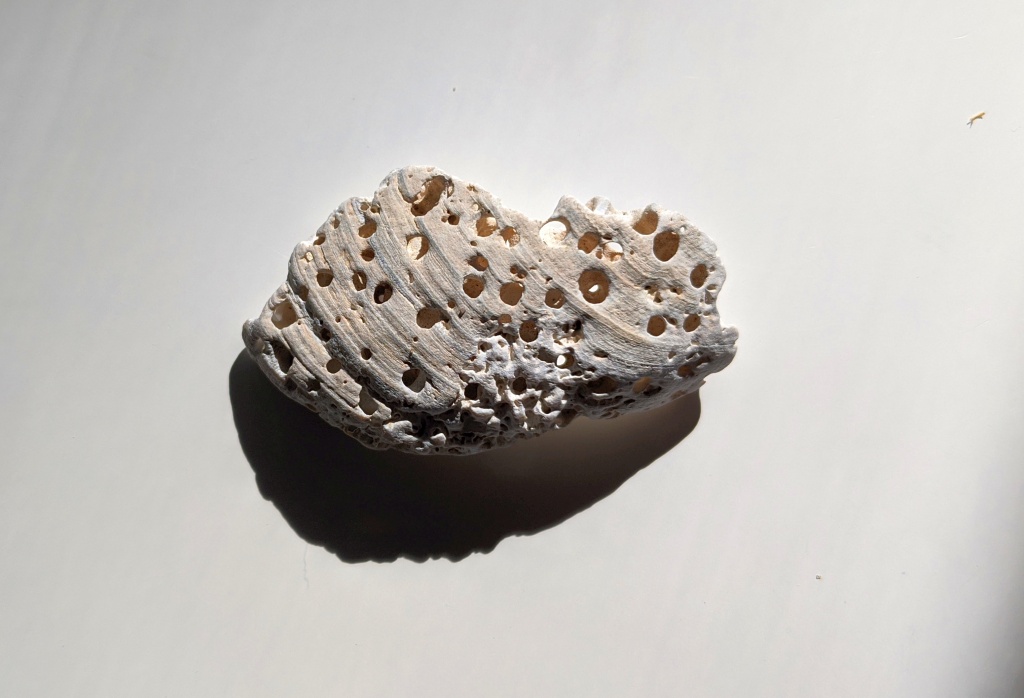
Last month I found this pitted shell at Chesapeake Bay in Virginia Beach and assumed the holes were made by sand and waves. But that can’t be true. If it was, most shells would look like this. So what happened here?
A Google search of shells with similar holes revealed the likely cause: a boring sponge.
Boring sponges make their homes by boring holes into the calcium carbonate shells and skeletons of animals like scallops, oysters and corals. Using chemicals, they etch into the shell and then mechanically wash away the tiny shell chips, slowly spreading holes within the skeleton or shell and sometimes across its surface. Eventually, these holes and tunnels can kill their host, but the sponge will continue to live there until the entire shell has eroded away.
— from Smithsonian Magazine article about boring sponges: Drill Baby Drill
Cliona celata is a common boring sponge that lives on oyster reefs in Chesapeake Bay and around the world. It’s considered a major pest by Bay oyster harvesters. Here’s what it looks like underwater and in two closeups.
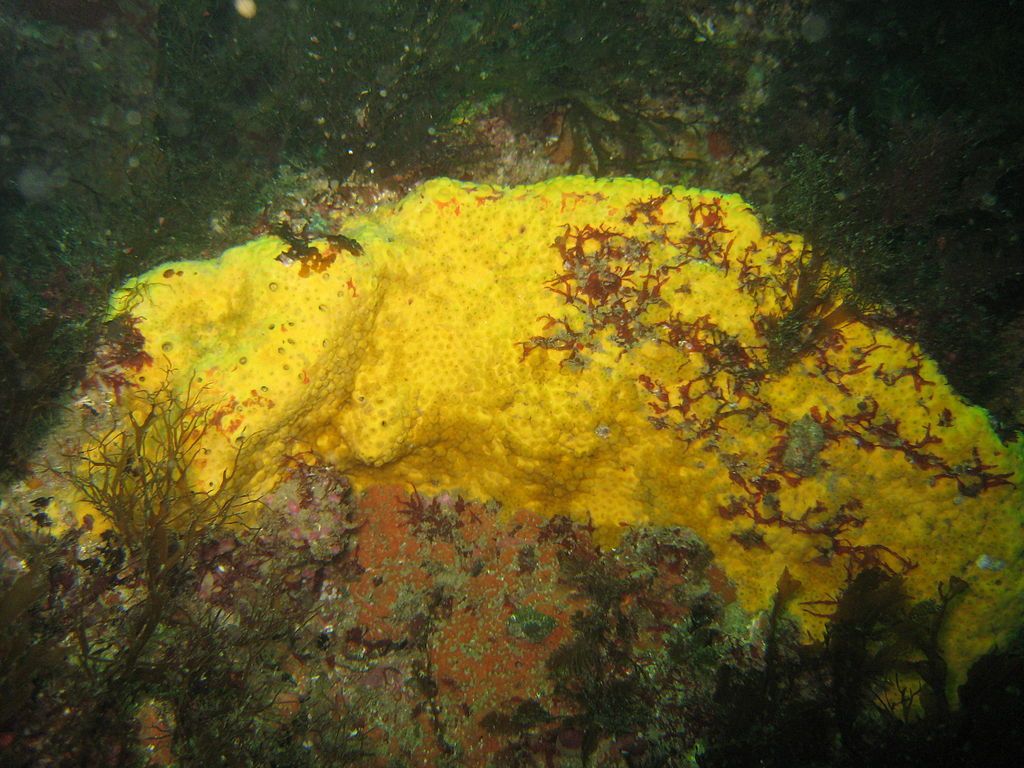
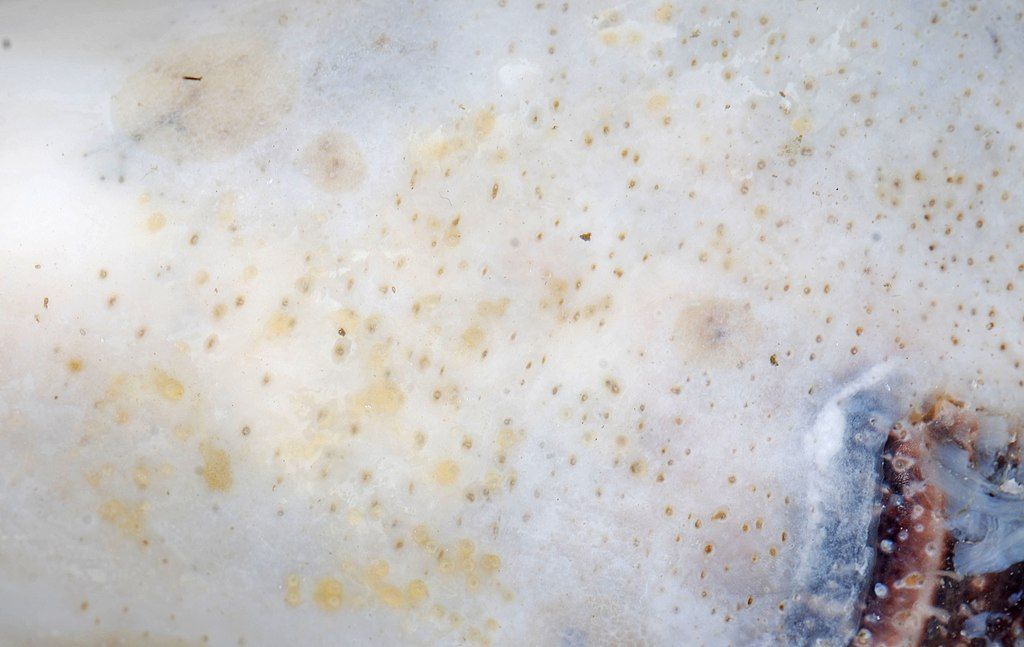
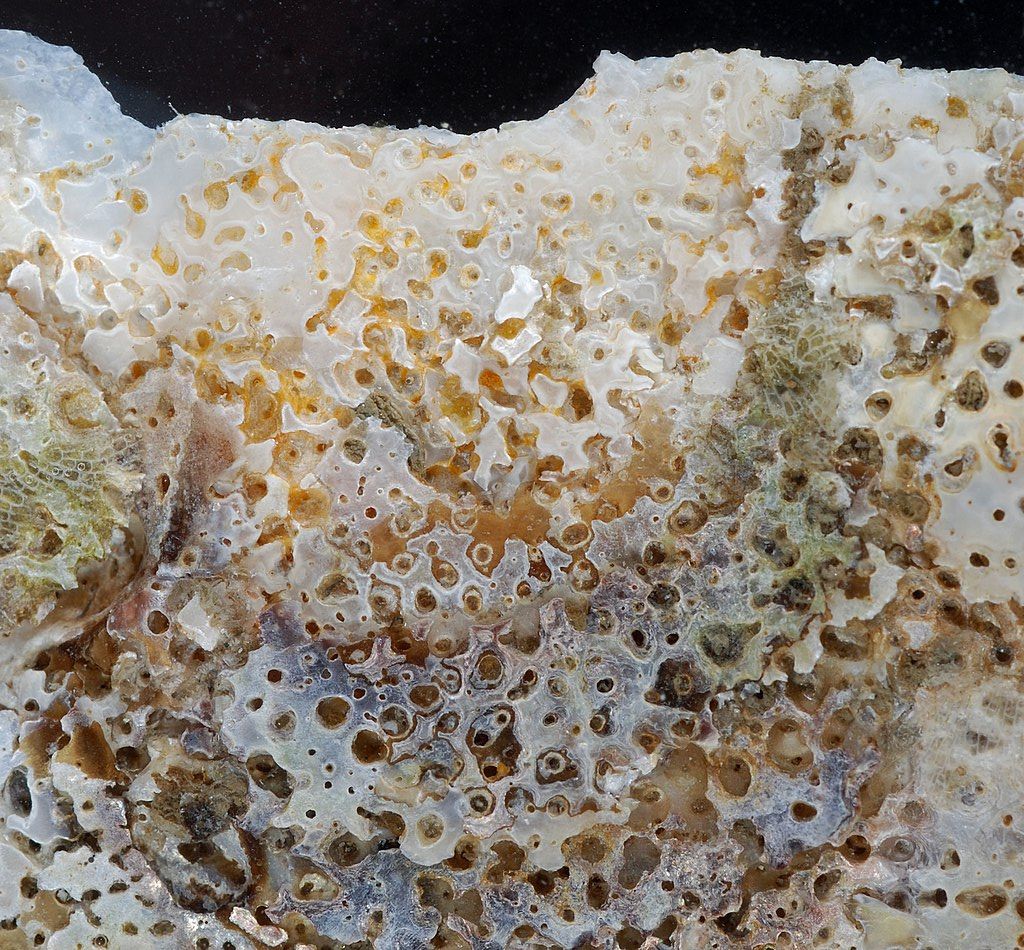
Interestingly, a 2013 study of scallops and boring sponges found that the sponges thrive in the warmer more acidic seawater that results from climate change. This spells bad news for oysters, corals and other shells.
In the future we’ll find more shells like this.
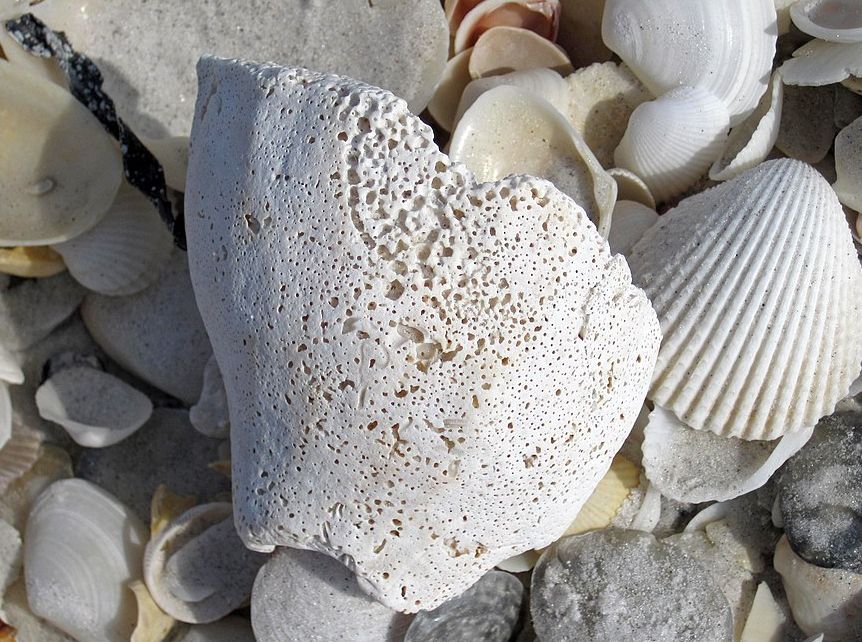
(first photo by Kate St. John, remaining photos from Wikimedia Commons; click on the captions to see the originals)
This answers a longtime question. I have many of these shells from Myrtle Beach.
Thank you! I’ve been going down to the bay in VA my whole life. I have always seen shells like that. Now I know!